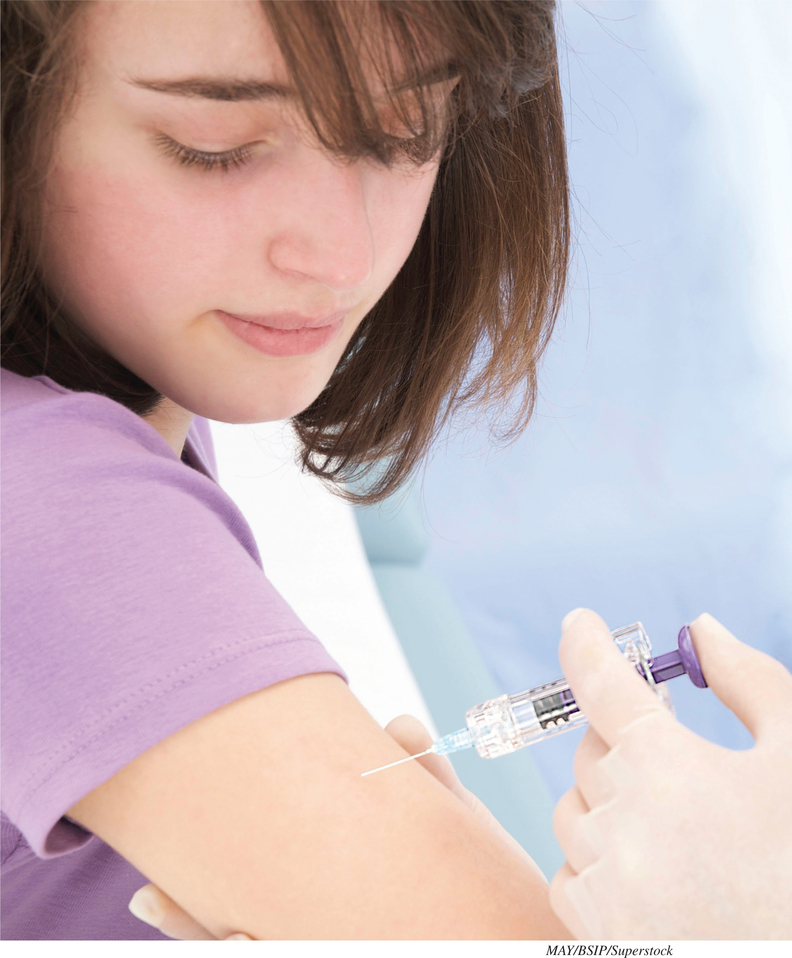Probability

Overview
 The Gardasil Vaccine
The Gardasil Vaccine
The Centers for Disease Control and Prevention (CDC) recommends routine vaccination with Gardasil for boys and girls ages 11 and 12, in order to combat the HPV virus. One reason for this is that it has been shown that 100% of cervical cancer patients have been infected with the HPV virus.1 The large data set Gardasil (Source: Journal of Statistics Education2) contains information regarding 1413 young women who underwent vaccination treatment. To complete the vaccination, a series of three shots must be undertaken. In the Chapter 5 Case Study, The Gardasil Vaccine, we explore whether patient location, insurance type, gender, and other factors affect a patient's probability of completing the vaccine treatment.
- In Section 5.1, we use the relative frequency method to assign probabilities to whether or not patients completed their Gardasil treatment.
- In the Section 5.1 exercises, working with the large data set Gardasil, we explore some probabilities about clinic location and patient insurance type, using the tools and techniques learned in the section.
- Again working with the large data set Gardasil, in the Section 5.2 exercises we examine probabilities regarding patient completion of the treatment and whether the patient received medical assistance, using contingency tables.
- In an example in Section 5.3, we apply the 1% Guideline to help find the probability that two randomly selected patients completed the treatment.
- Later in Section 5.3, we apply Bayes’ Rule using a crosstabulation of the variables completed and insurance type.
- Then, in the Section 5.3 exercises, we use a contingency table of completed and practice type (pediatric, family, or OB/GYN) to calculate some conditional probabilities. Later in the Section 5.3 exercises, we work with the large data set Gardasil to explore some conditional probabilities about patient completion and the age group of the patient.
THE BIG PICTURE
Where we are coming from and where we are headed …
- Chapters 1–4 dealt with descriptive statistics that summarize data. In later chapters, we will learn inferential statistics, which generalize from a sample to a population. But generalizing involves uncertainty.
- Chapter 5 teaches us the language of uncertainty: probability. We will learn how to quantify uncertainty, using experiments, events, outcomes, rules for combining events, conditional probability, and counting methods.
- In Chapter 6, “Probability Distributions,” we learn about the two most important probability distributions, the normal and the binomial, which will be our companions for the remainder of the text.